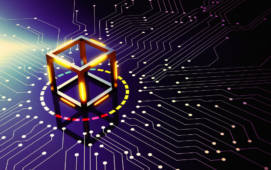Technology in the Capital Markets changes quite rapidly. In order to stay competitive, business and IT leadership must learn about new approaches, techniques, technologies, and how to integrate it all together.
Whether your role is as an architect, vendor, developer, analyst, or decision maker, it is vital to gain an understanding of these new areas in order to cut through the irrelevant and drill down to the priceless.
To help with that understanding, here is my list of the Top Seven Low-Latency Technology Advances …
(7) Low Latency Messaging
The last technology is the one near and dear to my heart. Low latency peer-to-peer messaging. Specifically, Ultra Messaging. Please don’t expect me to really be unbiased here. Peer-to-peer messaging is vital to low latency trading, not just for great performance, but for scalability, reliability and overall lower TCO.
Link:
(6) Cache-Friendly Algorithms
Over the last couple of decades, the CPU has been abstracted away from the software developer, for various reasons including better portability and for object-oritented programming languages. But for low-latency systems, architects and developers require a holistic view of the entire stack, especially hardware details like the CPU cache and instruction pipeline. Various coding tips and tricks in this area can help reduce latency by not just nanoseconds, but sometimes even microseconds.
This leveraging of the CPU cache and the instruction pipeline is a key aspect of the Disruptor (see #5), and is just the start of what can be done when CPU and Operating System details are integrated into the application development process.
(5) Inter-Thread Communication: Disruptor
Within a machine, communication between threads can be done in a number of ways. However, some recent great work has been done that will revolutionize the current state-of-the-art.
It’s called the Disruptor. And that is exactly what it is: disruptive.
Links:
Breaking New Ground with Ultra Low Latency Messaging
“Latest Innovations in Low-Latency High-Performance Messaging Software” – Join Martin Thompson of LMAX and me for the 9:30am session during the Informatica program, at the upcoming Low-Latency Summit 2011 on September 26th
(4) InfiniBand and 10 GigE
Currently, both InfiniBand and 10 GigE are very competitive. The technologies used by each are developing at a great pace and pushing each other in new directions, so picking one over the other is a matter of tradeoffs. Low hanging fruit is easy, though. If currently using 1 GigE, for example, then switching to 10 GigE is a no-brainer.
At the upcoming Low-Latency Summit on September 26th we will discuss this in more detail.
Link:
“Key Capabilities for Successful Latency Management” panel discussion (2:30pm) at the upcoming Low-Latency Summit 2011
(3) Shared-Nothing Architectures
Scalability is a game of have and have nots. It’s not good enough just to scale, but to scale well. In the database space, the advent of shared nothing architectures has been liberating for solving some scalability issues.
But the idea is not just for databases; we now see it creep into messaging systems (peer-to-peer messaging) as well as whole systems and architectures.
With the year-over-year exponential rate of data growth increase, scalability and shared-nothing is likely to become more strategic, and rather quickly.
(2) HTML 5 WebSockets
Next is the human element. Web interfaces are attractive in many respects.
But they don’t scale well, and meshing asynchronous, high volume data sources into the traditional HTTP infrastructure is difficult. And writing specialized code for mobile devices and multiple browsers is painful and inefficient.
HTML 5 WebSockets aims to change all that. WebSockets, a bi-directional, full duplex channel over HTTP that is supported in all modern browsers without resorting to non-portable tricks, is a game-changer.
Links:
http://en.wikipedia.org/wiki/WebSocket
http://www.kaazing.com
(1) Real-Time Analytics
Agility, or the ability to adjust tactics and strategy quickly to changing conditions, is important for every business, but particularly for capital markets, where time is literally money.
Capital markets data is extremely high volume and extremely dense, and growing in volume faster and faster all the time, but also contains very strategic and valuable information, which presents even bigger challenges than usual for real-time analytics and the infrastructure to support it.
Leading the charge in this area are systems such as EMC Greenplum with their High Performance Data Analytics (HPDA) appliance. This appliance marries the EMC Greenplum MPP database for massive scalability along with Informatica Ultra Messaging and B2B-DT technology to drastically reduce the time required to connect your streaming data to your data analytics processes.
Link:
Subscribe to our newsletter




